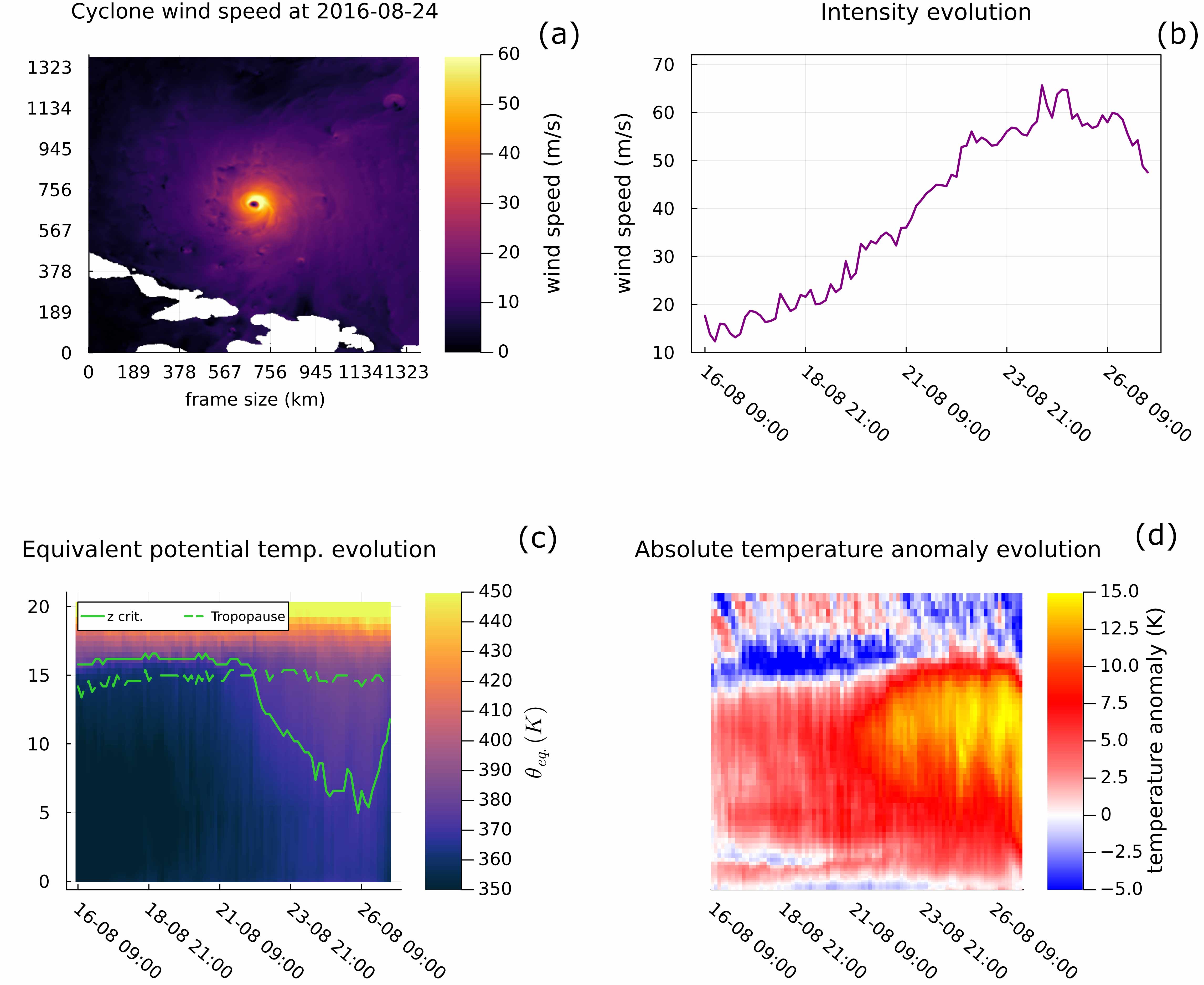Intensification of tropical cyclones: impact of fine scale processes
Atmospheric Sciences, Modeling
Research area
Predicting tropical cyclone (TC) intensity is still challenging. The Wind-Induced Surface Heat Exchange (WISHE) mechanism provides a framework for estimating TC maximum intensity, modeling intensification as a feedback between surface fluxes and wind speed, approximating TCs to a Carnot heat engine. This allows to estimate a maximum potential intensity (PI) based on boundary conditions: SST and upper tropospheric outflow temperature. High-resolution simulations and observations show deviations, including lower-than-PI intensities and intensity oscillations. These variations may result from cold SST patches, landfall, or vertical wind shear. Additionally, stratospheric interactions can induce upper-level warming by entraining buoyant air, potentially modifying intensification rates. This project explores the interplay between both air-sea fluxes and stratospheric interactions with TC intensification.
Project goals
The aim of the research project is to investigate the role of stratospheric air intrusion in tropical cyclone (TC) evolution. In the first phase, I analysed outputs from different high resolution numerical models, finding out that stratospheric interaction increases TC intensity, while also contributing to start its dissipation phase. These results proved to be consistent across simulations and models. Moving forward, I aim to validate these findings through satellite images datasets, assessing whether observational data confirm the identified mechanisms. Based on these results, the final stage of the project will involve high-resolution numerical simulations designed as sensitivity tests. These simulations will explore the interactions between key variables influencing TC intensification, providing deeper insight into the regulatory mechanisms governing cyclone intensity. Optimistically, this will lay the ground for refining the PI framework and improving TC intensity forecasting, specifically in case of TC interacting with the stratosphere.
Computational approach
I need to retrieve, store and analyse large amounts of data, in the order of the Terabytes. When I'll work on simulations, I'll need to be able to run multiple simulations at high spatio-temporal resolution (km scale), to limit as much as possible using parametrisation while simulating convective processes.
Simulation of a TC: (a) surface wind speed during intensification and (b) its intensity evolution. (c) Hovmoller plot showing the equivalent potential temperature in the core: this variable is conserved in convection, defining a threshold beyond which air can be considered of stratospheric origin. The height level at which this threshold is reached is "z crit" (solid line). (d) Core temperature anomaly with respect to pre-storm conditions, showing upper-level warming at the TC mature stage.
Andrea Davin
University of Milano-Bicocca
I hold a Bachelor's degree in Physics from the University of Milan-Bicocca (2017-2020) and a Master's degree in Physics of Complex Systems from the University of Turin (2020-2023, 110/110 cum laude), where I focused on mathematical modeling of vegetation pattern formation. As part of an Erasmus Traineeship at the Copernicus Institute of Sustainable Development (Apr.–Jun. 2023), I conducted a manipulative experiment on drought-induced vegetation patterns. Currently, I am a PhD student at the University of Milan-Bicocca, researching tropical cyclone intensification. I have also been a visiting student at IST Austria (Mar.–Jul. 2024). My main research interests include climate change and its impact on atmospheric and ecological systems.










